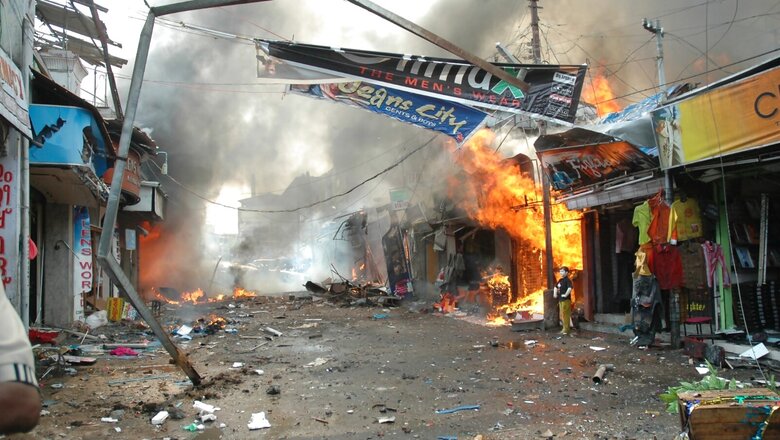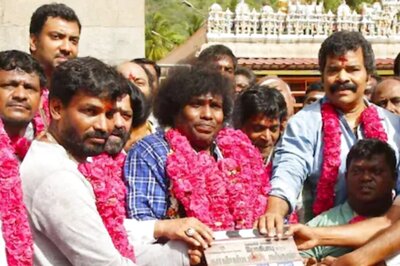
views
It has been a year since unprecedented violence took place in West Bengal after the Assembly election results were announced. Why has Bengal been suffering violence (both West Bengal and Bangladesh)? What was the original demographic composition of Bengal and how has it changed; and how this has affected the socio-political milieu in this region? This multi-part series would attempt to trace the origin of socio-political trends in the larger Bengal region (state of West Bengal and Bangladesh) over the last several decades. These trends are related to the evolution of Bengal over the last 4000 years. It’s a long journey and unfortunately most part of it has been forgotten.
In the last part of The Bengal Conundrum series, we would take a look at the anatomy of Noakhali riots of 1946. The template of anti-Hindu violence set up during these riots had grave implications for the future of Hindus in East Bengal, presently known as Bangladesh. These implications continue to get manifested in anti-Hindu violence in Bangladesh to date. That’s why it is important to dig a little deeper and understand the anatomy of Noakhali riots.
Imbalanced Demography and Anti- Hindu Propaganda
Noakhali is the youngest district in Gangetic Delta and it constitutes the south-western part of Chittagong Division. In 1946, it had an area of 1658 square miles and was inhabited by around 1.8 million Muslims and only 0.4 million Hindus. The Noakhali riots primarily took place in the area under six police stations– Raipur, Lakshmipur, Ramganj, Begamganj, Senbag and Sandwip. The Muslim population in the riot-affected area stood at around 0.9 million and the Hindu population was around 0.2 million.
DC Sinha, Ashok Dasgupta and Ashis Chowdhury mention in their seminal work The Great Calcutta Killings and Noakhali Genocide (pp 203), “It is clear that this overwhelming numerical superiority of the Muslims placed the Hindus absolutely at their mercy. From Calcutta ‘Direct Action’ spread to East Bengal… Ignorant villagers were told that the Hindus had killed almost all the Muslims living in Calcutta and they were asked to kill their Hindu neighbours in retaliation.”
They further add, “In Noakhali, the leader of this crusade was a prominent Muslim Leaguer of the district, Pir Golam Sarwar, who was a member of the Bengal Legislative Assembly for several years (1937-45). The Muslim ministry, which was in power during the period, allowed this man complete immunity against all laws, full freedom to preach Jihad against the Hindus and means to organise local hooligans under his leadership.”
Rape and Convert
Tathagata Roy has explained in A Suppressed Chapter in History the anatomy of these riots in Noakhali (pp 116), “The carnage began on October 10, 1946, the full moon night of Kojagari Lokkhi (Lakshmi) Puja when Bengali Hindus traditionally worship Lakshmi, the Goddess of Wealth…As with the Calcutta killings, elaborate arrangements had been made beforehand to ensure the success of the operation. The hinterland was cut-off from the Noakhali town by breaking the Sanko-s (one-pole bamboo bridges crossing canals). The boatmen in country boats were all Muslim. There was no way a Hindu could get away once the killings started. Still to make doubly sure, Muslim League volunteers guarded all routes leading to railway stations.”
Roy points out a significant difference between the Great Calcutta Killings that happened in August 1946 and the Noakhali riots a few months later, “In Calcutta, the intention of the marauders appeared to be primarily to loot and kill, or at least maim. In Noakhali, the objective seemed to kill selectively, but mainly to rape and convert forcibly and to desecrate Hindu places of worship.”
According to Roy (pp 117), “The task of these…few thousand, bloodthirsty, Jihad- crazed peasants surging forward to kill, rape and forcibly convert a few hopelessly outnumbered victims-would be the envy of any army in the world.”
Plight of Hindu Women
The plight of Hindus, especially women, can be gauged from a report sent by an English social worker Muriel Lester from a relief centre in Noakhali. She wrote on the basis of first-hand experience, “The worst of all was the plight of women. Several of them had to watch their husbands murdered and then be forcibly converted and married to some of those responsible for their death. These women had a dead look. It was not despair, nothing so active as that. It was utter blankness…The eating of beef and declaration of allegiance to Islam has been forced upon many thousands as the price of their lives.”
Modern Review, one of the most respected journals of that era, described the anatomy of these riots in its November 1946 issue, “On 10th October…the attack was made on the same day at the same time and in the same fashion on all the villages…Then followed an orgy of bestiality of murder, slow torture, ‘mass’ rape in the open and of arson that is difficult to describe. It will suffice to say that this orgy was widespread, and it surpassed by any description of Japanese atrocities in the early days of their occupation of China.”
Haripada Chatterje, a member of Bengal legislative Assembly, had shared his experience on the floor of the House after he toured the length and breadth of the riot-affected area, “From my direct experience, I can say that in the (riot-affected area) mass raping on hundreds of women committed; hundreds of women were kept in custody for 8-10 days and raped. Many women are yet to return home…Sons were killed in front of their mothers. Skeletons could be found in ruins as well. In some places, people were burnt alive. Husband was killed on the lap of wife.”
Implications
Tathagata Roy aptly summed up how the implications of Noakhali riots are relevant in today’s context, “The number of Hindus in that Noakhali used to be… 18 per cent (of total population of that region), while the percentage of Hindus in the landmass, today known as Bangladesh, was around 28 per cent (in 1946). Today, it is about 5 per cent, according to the 1991 Census, taking together the present-day Noakhali, Feni and Lokkhipur zillas (districts of Bangladesh. The proportion of Hindus in the whole of Bangladesh is 10.5 per cent (according to 1991 Census)”.
The writer, an author and columnist, has written several books. One of his latest books is ‘The Forgotten History of India’. The views expressed in this article are those of the writer and do not represent the stand of this publication.
Read all the Latest Opinions here




















Comments
0 comment